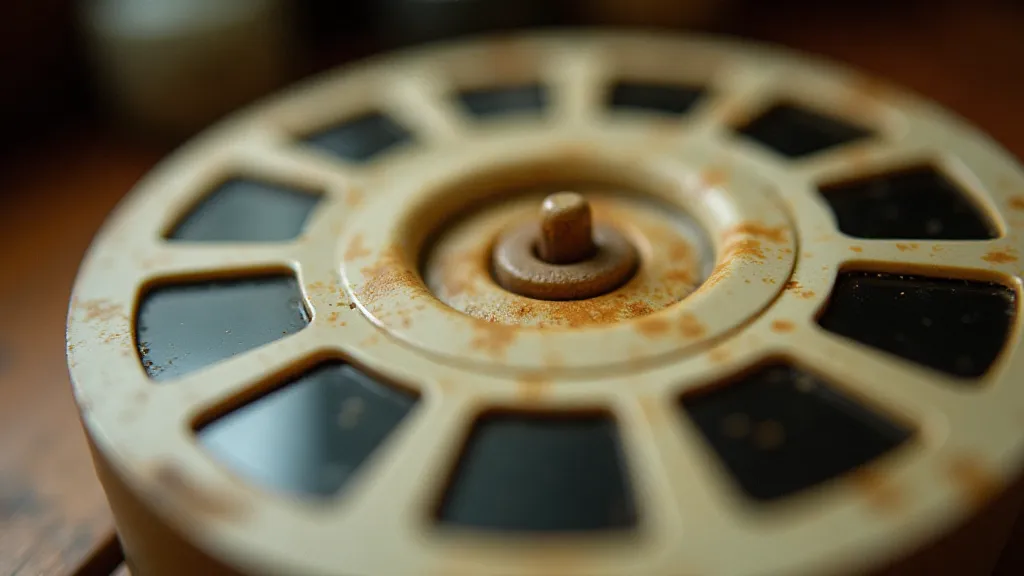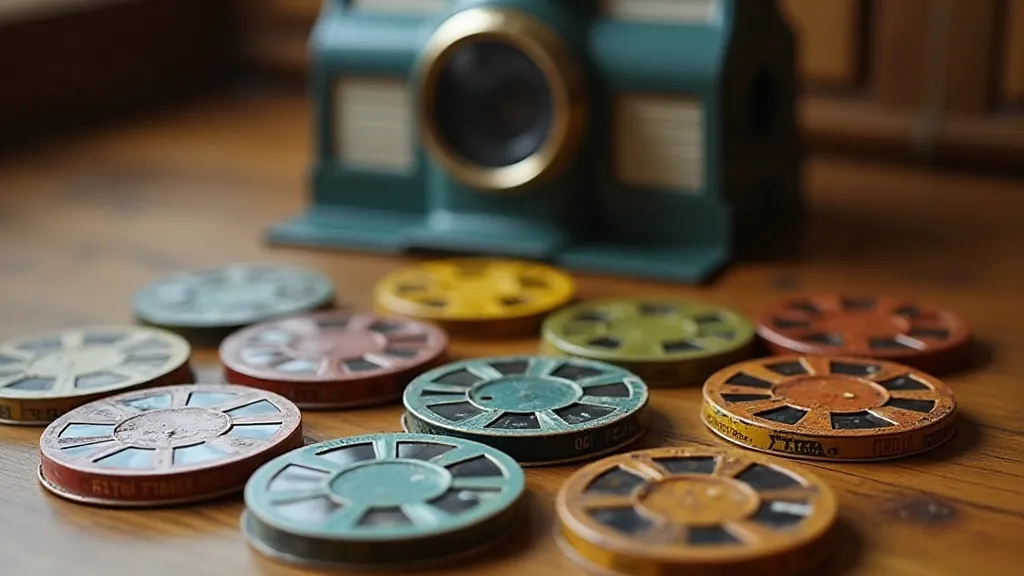The View-Master as Time Capsule: Preserving More Than Just Pictures
There's a peculiar comfort in holding a View-Master reel. The cool, smooth plastic, the satisfying *click* as it advances to the next scene – it's a tactile connection to a different time. More than just a device for viewing slides, the View-Master embodies an era of optimism, technological wonder, and a burgeoning fascination with travel and adventure. Restoring these reels isn’t just about fixing a toy; it's about preserving a fragile window into a world rapidly fading from memory.
My own fascination began with my grandfather's collection. A quiet, unassuming man, he held a remarkable trove of View-Master reels – stories of Yellowstone National Park, Disneyland’s early years, even a surprisingly detailed look at the construction of the Panama Canal. He’s gone now, but those reels remain, each one whispering stories of a childhood spent exploring the world through a circular frame. Handling them, I’m acutely aware of the responsibility that comes with being a custodian of such history. The faded colors, the slight scratches on the plastic, the occasional missing staple – these aren’t blemishes; they're testaments to time’s passage and the lives that have touched these simple objects.

A Brief History of Wonder
The View-Master, conceived by Harold Edgerton and Arthur Fisher in the 1930s, initially served a much more serious purpose – scientific demonstration. Edgerton, a pioneer in high-speed photography, used his invention, the strobe, to capture images impossible to see with the naked eye. The View-Master adapted this technology, initially showcasing scientific imagery. But its potential for entertainment was quickly recognized. Gauze screens were swapped for plastic reels, and the focus shifted to travel, nature, and storytelling. The post-war boom fueled the View-Master’s popularity, offering families a glimpse of faraway lands and thrilling experiences they might not otherwise encounter.
Think of the cultural context: a time before readily available color television, before affordable air travel. The View-Master offered a relatively inexpensive and accessible form of visual escapism, transporting children and adults alike to exotic locales and showcasing wonders of the modern world. The simple act of turning a dial and witnessing a series of still images unfold could be genuinely captivating. It fostered a desire to explore, to learn, and to dream.
The Delicate Art of Restoration
Restoring a View-Master reel isn’t about achieving pristine perfection. It’s about stabilizing the object, halting further deterioration, and respectfully revealing the character that years of existence have imparted. Aggressive cleaning or ill-advised repairs can easily do more harm than good. The goal is preservation, not recreation.
Common issues encountered in restoring vintage View-Master reels include brittle plastic, faded colors (often due to UV exposure), detached or rusted staples, and dust accumulation. Staples, in particular, present a challenge. Replacing them requires careful selection of the correct size and gauge, and a gentle touch to avoid cracking the reel body. Often, simply cleaning and securing the existing staples is the best course of action. For brittle plastic, careful application of a specialized plastic restorer, applied sparingly and according to the manufacturer's instructions, can help to increase flexibility and prevent further cracking.
Cleaning is another crucial step. Gentle brushing with a soft brush and careful vacuuming can remove surface dust and debris. For more stubborn grime, a specialized plastic cleaner – diluted according to instructions – can be used, but always with a test patch first to ensure it doesn’t damage the plastic.
Understanding the Reels: Beyond the Pictures
The true value of collecting and restoring View-Master reels extends beyond mere nostalgia. Each reel offers a unique snapshot of an era, a glimpse into the values and aspirations of the time. The subject matter reveals what was considered important, what was deemed worthy of sharing. Reels dedicated to industrial advancements, for example, highlight the post-war fascination with progress and technology. Reels showcasing national parks underscore the growing awareness of conservation and the importance of preserving natural beauty.

Furthermore, examining the packaging and promotional materials associated with the reels can offer invaluable insights into marketing strategies and cultural trends. The language used, the imagery presented – all these elements contribute to a richer understanding of the historical context.
The Craftsman's Touch: A Legacy of Skill
The quality of early View-Master reels is a testament to the craftsmanship of the era. The precision of the slide alignment, the sharpness of the images, the durability of the plastic – all these factors reflect a commitment to excellence that is often lacking in mass-produced goods today. Restoring these reels isn's just about fixing a broken toy; it’s about honoring the skills and dedication of the individuals who created them.
I often find myself admiring the tiny details – the intricate patterns embossed on the reel body, the subtle variations in color from slide to slide. These imperfections are not flaws; they are evidence of human involvement, reminders that each reel is a unique artifact.
Preserving a Moment, Sharing a Story
Restoring vintage View-Master reels isn’t a glamorous pursuit. It’s a labor of love, demanding patience, attention to detail, and a genuine appreciation for history. But the rewards are immeasurable. Each restored reel is more than just a collection of slides; it’s a portal to the past, a conduit for sharing stories with future generations.

My grandfather's View-Master reels are more than just toys; they are tangible links to my family history, to a time when wonder and exploration were readily accessible. And through careful restoration, I can ensure that these moments continue to be shared, inspiring curiosity and preserving the magic of a bygone era.




